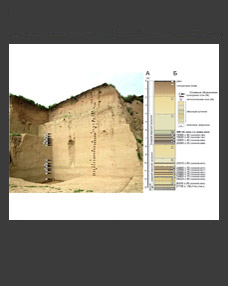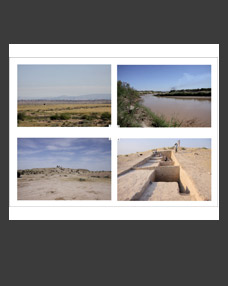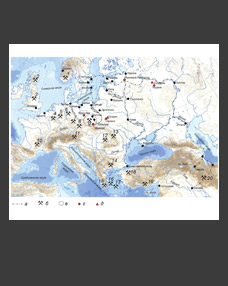Alla A. Perevozchikova1,*, Natalia N. Goncharova2,**, Andrey A. Kritsky3,***, Aleksandra O. Ivanova3,****, Egor I. Botsmanov3,*****, Tatiana R. Tsedilina3,******, Anastasia V. Pavlova3,*******, Evgeny I. Klimuk3,********, Konstantin V. Severinov3,4,*********, and Natalia Ya. Berezina1,**********
1Research Institute and Museum of Anthropology, Lomonosov Moscow State University, Moscow, Russia
2Lomonosov Moscow State University, Moscow, Russia
3“Biotek Kampus” LLC, Moscow, Russia
4Institute of Gene Biology RAS, Moscow, Russia
*E-mail: allarevik@gmail.com
**E-mail: goncharovann@my.msu.ru
***E-mail: akrickiy@biotc.ru
****E-mail: aivanova@biotc.ru
*****E-mail: ebotsmanov@biotc.ru
******E-mail: tsedilinat@gmail.com
*******E-mail: anastassyapavl@gmail.com
********E-mail: eklimuk@biotc.ru
*********E-mail: kseverinov@biotc.ru
**********E-mail: berezina.natalia@gmail.com
Keywords: Southern Russia, Medieval Alans, biological anthropology, paleogenetics, environmental impact, physiological stress, cribra orbitalia, malaria, paleoparasitology.
Stress markers are defined as skeletal signs that reflect the degree of environmental influence and adaptation to this influence. One of the most notable examples is the porotic change of the upper wall of the orbit, which is commonly referred to as cribra orbitalia. In this study comparative analysis of the prevalence of cribra orbitalia in individuals from medieval populations of the North Caucasus middle mountains and of the plain region of the Central Russian Upland (predominantly in the groups of Alanian and Saltovo-Mayaki archaeological cultures) was conducted. Cribra orbitalia was, on average, three times more frequent in the remains of flatland regions’ populations than in the populations of middle mountains. This suggests that the former was subject to a more significant negative environmental impact, which could have included combined stresses related to climatogeographical and biotic environmental parameters, including the recent migration of the Alanian population from the foothills to the plains. Analysis of ancient DNA was conducted on selected individuals from both groups. Two cases of Plasmodium vivax infection were identified in teeth samples of two individuals buried in the Mayatskoye burial ground.
DOI: 10.31857/S0869606325010075, EDN: BGVXAF







